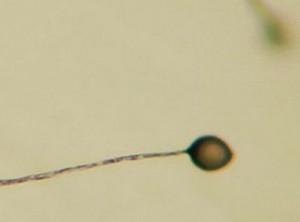RT January 26 2014

Scientists have discovered a way to study the causes of Alzheimer disease using a simple single-celled amoeba, which leads to a better understanding of how human proteins mutate. It circumvents the need for animal testing.
British scientists point to the possibility of amoeba use in biomedical studies of the presenilin protein that plays a part in causing Alzheimer disease, widespread among the elderly. A press release about the study by researchers from the Royal Holloway University of London and the Institute of Psychiatry of King’s College, London, was published in the Journal of Cell Science on Friday.
It reveals that the so-called ‘social’ amoeba has become an essential source in the understanding of how human proteins function, whose mutations are associated with the development of dementia. It could lead to the creation of a new generation of treatments for this incurable disease.
Professor Robin Williams, a scientist from Royal Holloway, University of London elaborates on the idea of using amoeba in medical research of epilepsy, saying, “This discovery allows us to examine the role for the human presenilin 1 protein, without the use of animal testing. It is amazing that so simple an organism lends itself to the study of such a complex disease”.
Animals are commonly used in Alzheimer research, but such experiments are problematic not only because of their cost, the time they take, and potential protests from animal rights activists, but also because after deletion of the proteins under study, animal cells become non-viable.
Alzheimer’s disease is the most common dementia type in people over 65, which develops when nerve cells in the brain die or no longer function normally, causing changes in one’s memory, behavior and ability to think clearly. It was first identified more than 100 years ago, but the precise changes in the brain that trigger the development of Alzheimer’s and the order in which they occur largely remain unknown. Individuals progress from mild Alzheimer’s disease to moderate and severe disease at different rates, which finally leads to death.
On the contrary, the ‘social’ amoeba, Dictyostelium, that occurs naturally in forest litter in temperate regions provides a cheap source for research, because it can be grown in a laboratory and used as a single-celled body, or a formation of a fruiting body consisting of around 50,000 cells. Both methods are needed in a range of biomedical projects from Alzheimer to bipolar disorder research.
Dr. Richard Killick, the article’s co-author, from the Institute of Psychiatry King’s College, London said, “This work on the amoeba, Dictyostelium, shows we can successfully use this simple model to try to better understand the normal roles of other proteins and genes involved in Alzheimer’s disease and other forms of neurodegeneration.”
And the brain degeneration, caused by mutations in presenilin proteins, only worsens with the aging process. Those mutations, thoroughly analyzed by scientists during the last 30 years, can also cause inherited forms of Alzheimer disease, which, according to the report, is the sixth-leading cause of death in the USA.
